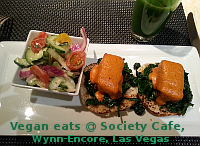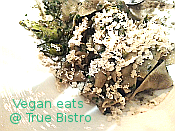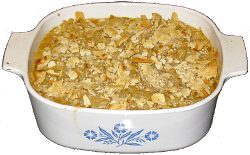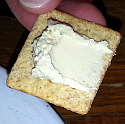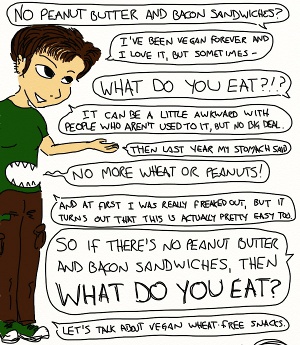Staple Foods
- Greens/Veggies - eat lots of red, orange and dark green vegetables (e.g., tomatos, sweet potatoes, bell peppers, kale, spinach, broccoli, seaweed, collard greens) which are packed with vitamins, minerals and fiber (as well as some protein). Avoid iceburg lettuce as it has very little nutritional value.
- Nuts/Legumes - nuts (almonds, cashews, walnuts, hazelnuts, etc.) and legumes (white beans, chick peas, kidney beans, soy, etc.) are great sources of protein and vitamins. If you're athletic, you need extra protein for all that muscle building.
- Grains - whole wheat flour/breads, brown rice, quinoa, spelt, millet provide necessary carbohydrates, vitamins and minerals (as well as some protein). Whole grains contain the "whole" nutrition of the grain. "White" or "bleached" grains have most nutrients stripped out and aren't nearly as good for you.
- Fruits - bananas, oranges, grapefruit, berries, kiwi, mango, apples and other fruits can provide you with energy (sugar), vitamins and antioxidants (berries). Fresh fruits are best, but frozen or canned fruits and fruit juices are good too (just make sure there's no sugar added!).

Nutrition
- Vitamin B-12:
 this vitamin is needed for nervous system health and is produced by bacteria on vegetation, but in the modern world is washed off most fruits and vegetables before eating, so vegans must acquire this through supplements or eating B-12 fortified foods (e.g., nutritional yeast). Vitamin B12 for Vegans
this vitamin is needed for nervous system health and is produced by bacteria on vegetation, but in the modern world is washed off most fruits and vegetables before eating, so vegans must acquire this through supplements or eating B-12 fortified foods (e.g., nutritional yeast). Vitamin B12 for Vegans
 Vitamin D: this vitamin is needed for bone and skin health, among other things, and occurs naturally in very few foods (mushrooms is one), but can be synthesized by your skin in sunlight. Unfortunately, the sun synthesization is limited by certain hours and longitude as well as clothing, sunscreen and melanin, so most of us need to supplement daily. D2 (ergocalciferol) is vegan (think R2D2); the other kind is (almost always) animal-derived.
Vitamin D: this vitamin is needed for bone and skin health, among other things, and occurs naturally in very few foods (mushrooms is one), but can be synthesized by your skin in sunlight. Unfortunately, the sun synthesization is limited by certain hours and longitude as well as clothing, sunscreen and melanin, so most of us need to supplement daily. D2 (ergocalciferol) is vegan (think R2D2); the other kind is (almost always) animal-derived.- Calcium: this mineral is important for bone health as well as nerve function and bone loss. Calcium can be found in most leafy green vegetables (e.g., spinach, kale, broccoli, bok choy) and calcium-fortified foods. Contrary to popular belief, animal-derived calcium is not optimal because high levels of animal protein (e.g., in cow's milk) can leach calcium from the bones. FYI, strengthening bones requires regular weight-bearing exercise (calcium will not do it on its own).
- Iron: this mineral is important for oxygen transport in the circulatory system, among other things. Lack of iron can cause fatigue, headaches and other problems. Iron deficiency is common in the USA, but getting enough iron as a vegan is easy, as most greens contain iron (e.g., kale, broccoli, bell peppers). Iron in the Vegan Diet
- Protein: this nutrient is important for building and maintaining muscle and bone mass. This is fairly easy to obtain on a vegan diet, as most greens and grains contain some protein, while nuts and legumes (and high-protein meat substitutes like tofu, seitan or tempeh) contain a lot. Protein needs vary by individual and by level of activity (if you're an athlete, you will need more).
Mythbuster: 20th century rumor that plant foods were "incomplete" proteins is scientifically disproven: plant foods contain all 9 "essential" amino acids (histidine, isoleucine, leucine, lysine, methionine, phenylananine, threonine, tryptophan and valine), which is what makes a protein "complete."
Verify yourself in the USDA Nutrient Database (e.g., search on "pinto, beans, canned" then view the Full Report and click on Amino Acids expander; all aminos are present).
Thanks to Vegan Health & Fitness October 2015 for the amino info.
- Quantity & Quality: in order to get all your nutrients as a vegan, it is required to eat a wide array of plant foods (see staple foods). It is not sufficient to continue a pre-vegan diet and simply cut out the animal-based foods; you will need to expand your food horizons. Note that plant-foods have lower calorie-density, which means they don't have as much energy per ounce as animal-based foods - so you will need to eat a larger quantity of food than a non-vegan for the same amount of calories.
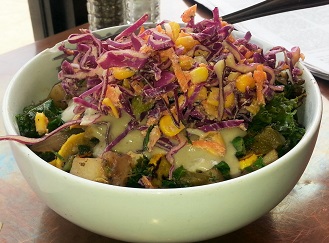
- If you begin to feel weak or fatigued as a new vegan, you may not be eating properly or be running into some allergy or intolerance, and you should review the nutrition resources here and see a vegan-friendly nutritionist.
- Vegan Nutrition sources:
- Government Nutrition information (includes lots of vegetable info and the vegan diet fits in):
- USDA Dietary Guidelines 2010 (note: there are newer guidelines since then, but I haven't had a chance to review them so not sure if they explicitly include plant-based diets, like this one does)
- See also my Vitamins & Supplements section (note: avoid vitamins sourced from animals).
- See also Our Health section (summarizes problems with animal-based diets & reasons to eat vegan).
Dairy, Egg & Meat Substitutes
Vegans may desire the taste of common foods usually made with animal-derived products (e.g., cake) - luckily, there are many plant-based substitute foods available (and recipes to make your own). While these are not necessary for good nutrition, they can be enjoyable on occasion. It's a good idea to always check for a "vegan" tag (or read ingredients) when you purchase items as sometimes formulas change.
- Milk
- the easiest to find substitute for cow's milk is plain coconut milk (canned),
 available at any Asian grocery store or in the Asian aisle of most any supermarket (you may prefer the "lite" variety, which has less fat, similar to 2% cow's milk).
available at any Asian grocery store or in the Asian aisle of most any supermarket (you may prefer the "lite" variety, which has less fat, similar to 2% cow's milk).
However, other kinds of non-dairy milks have been gaining popularity, so you should be able to find soy or almond milk at your local grocery store (or even at your local coffee shop). You might also try hemp milk or sunflower milk (available online or at specialty stores). Silk also makes decadent non-dairy beverages like Soy Creamer and Silknog.
- Butter - this is essentially just fat (and salt), so in many cases you can substitute vegetable oil (oil = fat), especially in cooking. If you want a distinctive taste, olive oil is good, especially with bread. If you prefer the spreadable solidity of margarine, there are some vegan margarines available and the one closest in taste to animal-derived butter is "Earth Balance Buttery Spread":
- Cheese
- there are a number of vegan cheese alternatives, premade, as well as mixes and recipes. Some options are better for melting, some taste better raw - try different options for different foods! For
making pizza or nachos, I like Daiya or Vegan Gourmet, while pasta (e.g., mac&cheeze) tastes best with homemade sauce (made with nutritional yeast). Make sure your cheese is vegan and not "veggie" (as some "veggie" cheeses contain casein, a milk-derived ingredient).
- Yogurt
- there are a number of soy-based and even some coconut-based yogurt
products which contain the same probiotics and health benefits as traditional
animal-derived yogurt and without lactose or other animal-derived substances, for example:
- Ice Cream - like non-dairy milks, there are many vegan options out there, soy, rice or coconut-based.
- Cream Cheese / Sour Cream -
there are a few vegan cream cheeses or sour creams available, which may be required for certain recipes, the most widely
available seems to be those by Tofutti:
- Mayonaise - several vegan substitutes for mayonaise exist:
- Eggs -
eggs are often used as a binding or leavening agent in baking and for that reason,
you need a substitute that is chemically similar (baking is part art
and part chemistry) - you can make your own, but the easiest I've found is EnerG brand "Egg Replacer".
As substitute for scrambled eggs, omelet or other egg component of an entree, tofu is the right consistency and nutritional yeast gives the best flavor
- EnerG Egg Replacer for baking needs (mix with water)
- Just Egg (just shake and pan-cook)
- Vegan Egg
- Bragg - Nutritional Yeast
 (mix with tofu for scramble or omelets)
(mix with tofu for scramble or omelets)
- Quick Tofu Scramble recipe: 1 pckg Extra-Firm Tofu, 1/2 cup nutritional yeast, 2-3 spoons oil (or vegan margarine), garlic, salt, other seasonings to taste (squeeze water from tofu > place in bowl > mix all ingredients with fork > fry in large pan on medium-high heat, stirring frequently to avoid burning)
- Meat
- there are numerous plant-based meat products out there, many of which
are vegan (derived from wheat, nuts, beans or vegetables),from
vegan meatballs and hot dogs to vegan deli meats. Most supermarkets carry
some high-protein vegan meat substitutes. The most
common and simple of these are Tofu (soy bean curd, usually soft but can be made firm), Seitan (wheat gluten, chewy texture),and Tempeh (fermented soy cake, firm and grainy). Here are a few brands that make a number of vegan meat substitutes:
See also F.E.P. Vegan Foods list, and the Food Shopping section below for additional info.
See also my [all-vegan] Food, Glorious Food album on Flickr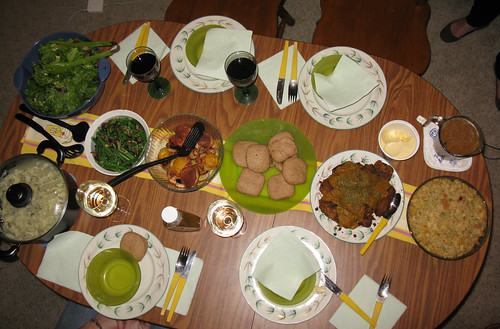
Eating Out
When eating out, your best option is all-vegan restaurants, but you can often find vegan-friendly vegetarian or omnivore restaurants.
Note: fancy restaurants can often accommodate a vegan with a special entree (not on the menu) if you have them ask the chef (this is recommended when making reservation).
Local vegan and vegetarian groups often have restaurant listings, or you can use one of the below "veg" dining sites (I like HappyCow, which is how I found The Society Cafe, pictured here), or you can also do location-specific online searches (e.g., "Chicago vegan restaurant").
Scroll down for Smartphone Apps
However, not to worry if your location doesn't yet have specifically listed vegan-friendly places; here are some tips for finding vegan-friendly food by cuisine (in most any sizeable town or city):
- Greek / Middle Eastern - falafel, baba ghanoush, stuffed grape leaves and other middle eastern vegetarian staples are often vegan (but ask about sauces which may contain yogurt)
- Ethiopian - many vegetarian options, almost all of which are vegan (ask your server)
- Afghani - a few vegetarian options, which are usually vegan or veganizable (make sure no yogurt)
- Tibetan / Nepalese / Burmese - many vegetarian options, most are vegan
- Indian - many vegetarian options, few of which are vegan (many contain dairy, be sure to ask about butter, ghee, dairy/yogurt in everything, even on bread & rice)
- Thai / Vietnamese - many vegetarian options, which are often vegan (but may contain fish sauce, be sure to ask)
- Chinese - "vegetable" options, which don't have dairy (but it's hard to know what's in the sauces, so be sure to ask specific questions about animal ingredients (fish/pork/etc.), or stick with steamed vegetables / tofu / rice; usually "buddhist" or "buddha" options are vegan)
Avoid most "Western" or European style restaurants (mainstream chain restaurants, fast food, Italian, steakhouses, etc.), as these places seldom have any vegan entrees and few, if any, vegan appetizers. Mexican places frequently use chicken stock in the rice or pork/lard in the beans, so caution is recommended. If you're in an extremely vegan-friendly location (like Northern California), then this may not apply as you can find vegan options almost anywhere.
If you're eating someplace where vegan items are not clearly marked, always ask questions; if I suspect they may not understand the term, "vegan", I'll usually say I am a "strict vegetarian" and that I don't eat dairy, eggs or anything from animals. If I order a vegan version of a normally non-vegan dish, I will usually double-check when they bring it out ("that's the vegan XYZ, right?" and smile) as it's quite common for mixups to happen.
Smartphone Apps:
Recipes
My favorite things to make are: Stir-fry/Curry,
Soup,
Pizza, &
Pancakes
Stir-fry, pizza and soup are super-easy to make because you can use nearly any variation of veggies and there's not a strict "recipe" that needs to be followed., though there are a few necessary ingredients and guidelines (see next few sections or use quicklinks above). Pancakes do require a recipe, but are also flexible and quite easy to make as long as you have the key ingredients.
There are many vegan blogs available with recipes (and food pictures):
There are many vegan cookbooks available, here are a few:
Cashew Party Cheeze (c/o Amanda T., pictured):
- 1 cup raw cashews, Juice of 1/2 lemon, 1 tsp. salt, 1 tbsp. White wine vinegar (or to desired "tang"), 4 tbsp. water, chives/rosemary.
- Blend in a food processor until creamy. May want to add tiny amount of water for more "wet" consistency.
Food Shopping
The easiest vegan items to find are whole plant foods like vegetables, fruit, beans, nuts, flour and grains, which can be found in grocery stores, farmstands and farmer's markets, but the modern
world offers many processed (multi-ingredient) foods to choose from.
Finding vegan processed foods can sometimes be a challenge and
vegans should be careful to always read the labels to determine if food is vegan (hint: if cholesterol > 0, then it contains animal ingredients since plants do not contain cholesterol).
There are also online vegan stores where you can get non-perishable vegan specialty foods, snacks and vitamin supplements, some examples:
When purchasing processed foods from a non-vegan store, you'll want to avoid anything that contains known animal products (egg, milk, dairy, casein, whey, butter, meat or any other recognizable animal-derivative) and, for unknown ingredients, you may want to consult the following to determine whether a given ingredient is (or may be) animal-derived:
Most supermarkets (Shaw's / Star Market, Stop & Shop, P&C,
Wegman's, Price Chopper, Trader Joe's) carry some vegan specialty
items (e.g., tofu and soy-milk), but health food
specialty stores like your local Co-op or Whole Foods will have the
most variety. Some items like vegan cheese, egg replacer and vegan
ice cream may be hard to find outside specialty stores.
Some ingredients & starters (see also substitutes section):
- Arrowhead Mills - grains and other products, including vital wheat gluten (can be used to make seitan)
- Bob's Red Mill - grains and other products, including vital wheat gluten (can be used to make seitan) and nutritional yeast
- Soy Curls - tofu-like meat substitute (for fajitas, etc.), available from Vegan Essentials.
- Lundberg - grains like brown rice and brown rice syrup
- Red Star Nutritional Yeast - useful for flavoring in tofu scramble, mac & cheeze and other cooking, also has nutrients like B-12
- Spectrum - organic shortening and other vegetable oils
Vegan baked goods and candy (for ice cream, see also substitutes section):
Allergies & Intolerances
A few of the most common allergies and intolerances are to seafood,
eggs and dairy (especially lactose-intolerance), which are automatically avoided by choosing a vegan
diet. However, some people have allergies or intolerances to certain
plant materials, such as gluten/wheat, soy, tree nuts and peanuts. These plant allergies and intolerances require special consideration in a vegan diet. First the terms explained:
- An allergy is where the immune system reacts to a normally benign substance as if it were a toxin, which may include hives, swelling, restricted breathing, tears, runny nose, itching or anaphylactic shock. Food allergies usually commence quickly and may be life-threatening, especially in the case of peanuts (a legume) or tree nuts ("real" nuts). People with food allergies quickly learn to avoid certan foods (it's like aversion therapy). For example, I'm allergic to cherries - if I eat one, my throat and lips get itchy and swollen like I've been stung by dozens of mosquitos - I avoid cherries.
- A food intolerance is where the digestive system has trouble processing a normally edible substance, which may involve gas, nausea, constipation, diarrhea and other negative GI reactions. Food intolerances are usually slow to commence and are seldom life-threatening, but are very uncomfortable and disruptive. Because food intolerances are so slow to result in symptoms, it can be hard to isolate the cause and even when the cause is known, some people will succumb to the allure of a tasty food and deal with the consequences later. The most common food intolerance is lactose-intolerance, which is fortunately not an issue for vegans, but wheat/gluten intolerance seems to be getting more common and that does affect vegans.
In the 2020s, it's fairly easy to find specialty recipes and allergy information, in books/cookbooks and "in the wild" by searching the internet using the appropriate terms (e.g., "nut-free vegan recipes"), so I won't provide links here
(which are tricky to maintain over time), but see below for some general tips.
Soy-free vegan options have are plentiful these days, including myriad soy-free plant milks (e.g., oat milk, almond milk), yogurts and ice cream as well
as wheat-based protein (e.g., seitan-based faux-meat options). Most pasta and Italian-influenced dishes are soy-free (but always check or ask about
ingredients).
Wheat/gluten-free, assuming you don't have a life-threatening allergy (i.e., trace amounts are OK), is pretty easy to do in Asian
cuisines where many dishes come with rice and veggies (no wheat products) and even breads and noodles may be made with non-wheat flours. In Indian
cuisine, dosas, utthapam and samosas are typically made with lentil flour. Ethiopian bread (injera) is usually made from teff (non-wheat), but may have
other flours mixed in, so always ask. Note: gluten is a protein derivative of wheat (and related grains), so often gluten-free and wheat-free are
used interchangeably, although they are slightly different.
Nut-free foods can be harder to come by as nuts (tree nuts or peanuts) are used in many many kinds of vegan foods, especially animal
product substitutes and desserts. If one is nut-free but not soy-free or not wheat-free, then there should be many soy- or wheat-based options.
If one needs to eat soy, wheat and nut-free, then "safe" high-protein faux-meats may be hard to find at the store (other than
jackfruit, you may be limited to beans/legumes), but even so, you're likely to find some recipes online and some cuisines that will be suitable.


 this vitamin is needed for nervous system health and is produced by bacteria on vegetation, but in the modern world is washed off most fruits and vegetables before eating, so vegans must acquire this through supplements or eating B-12 fortified foods (e.g., nutritional yeast).
this vitamin is needed for nervous system health and is produced by bacteria on vegetation, but in the modern world is washed off most fruits and vegetables before eating, so vegans must acquire this through supplements or eating B-12 fortified foods (e.g., nutritional yeast). 

 available at any Asian grocery store or in the Asian aisle of most any supermarket (you may prefer the "lite" variety, which has less fat, similar to 2% cow's milk).
available at any Asian grocery store or in the Asian aisle of most any supermarket (you may prefer the "lite" variety, which has less fat, similar to 2% cow's milk).

